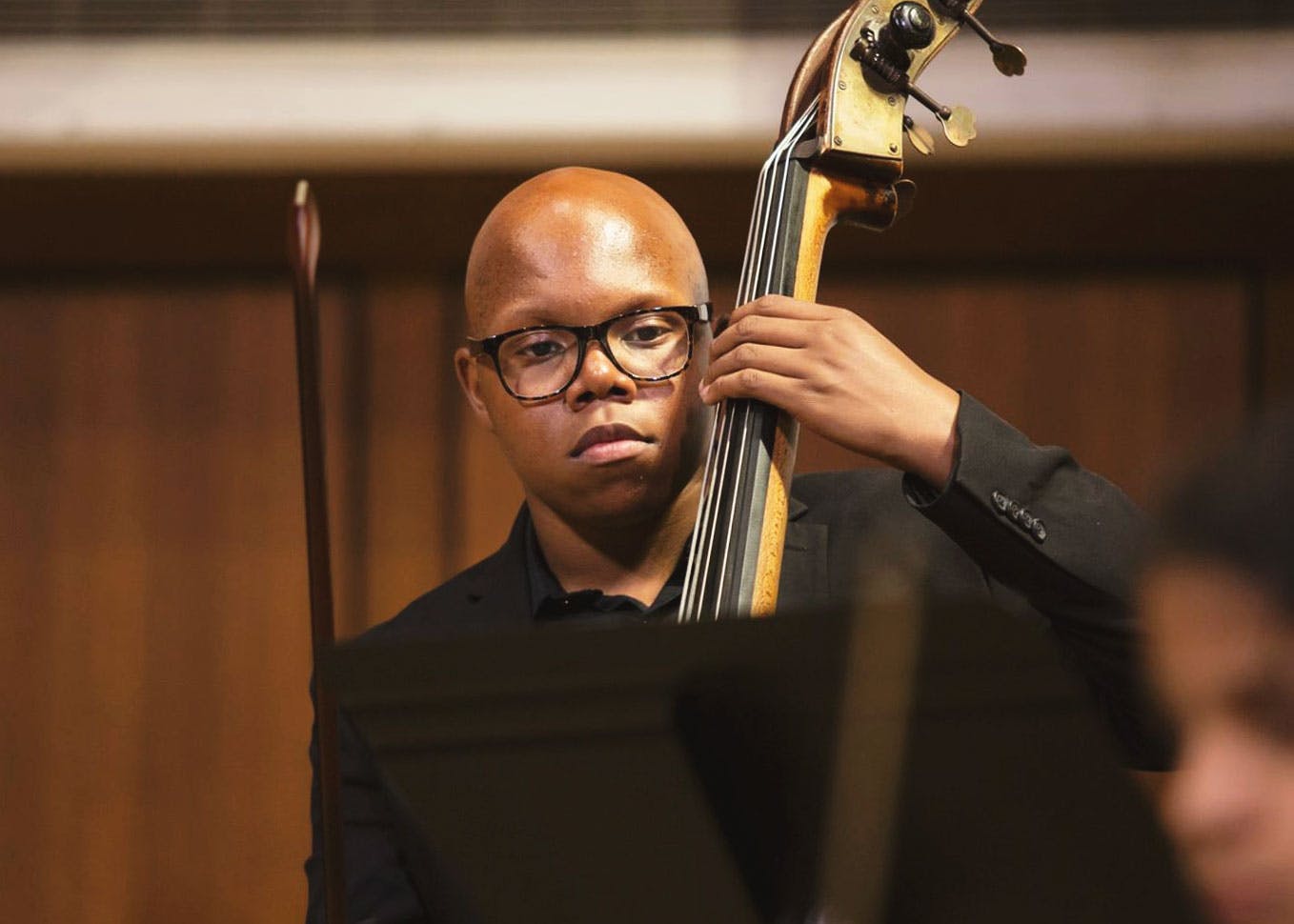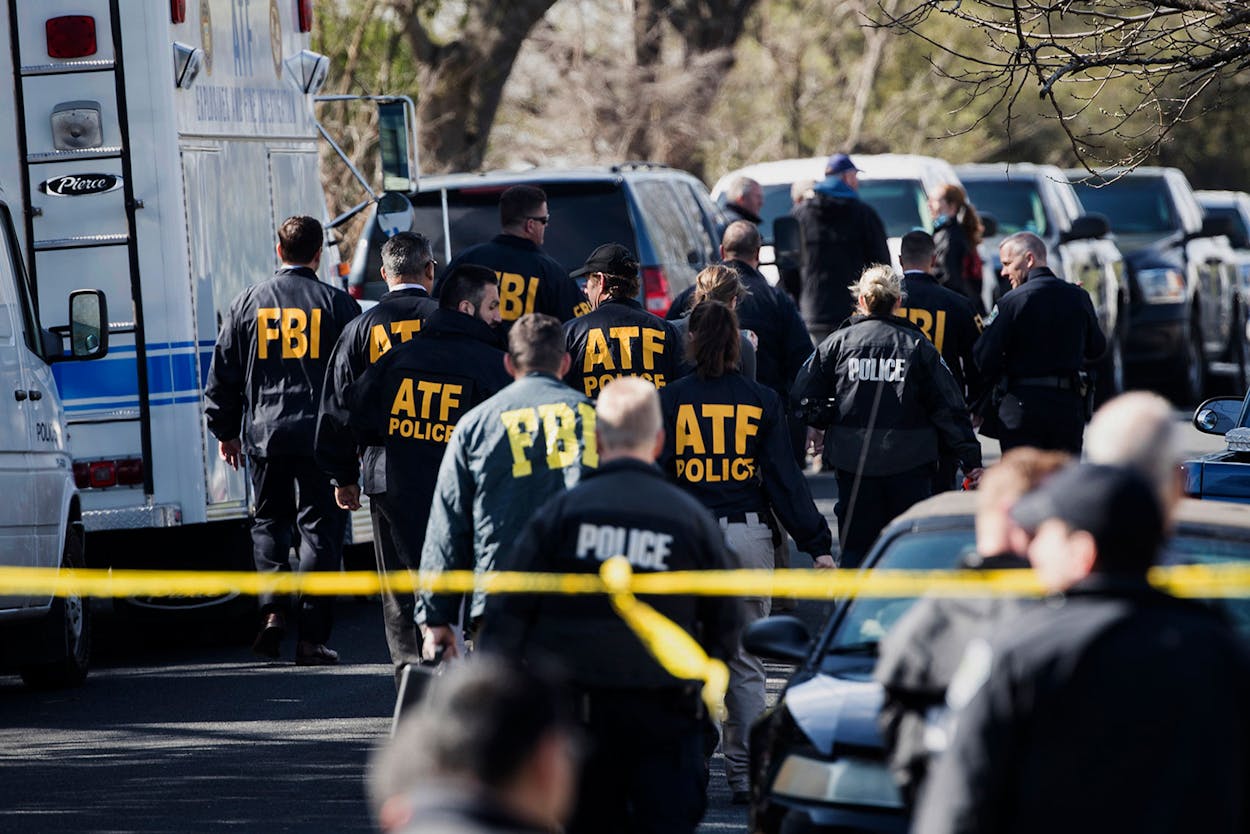Early on Wednesday morning, the man suspected of planting the bombs that had sent Austin into a state of dread and panic died, killed by one of his own devices, apparently at his own hand, while surrounded by police.
In the hours that followed, people rushed to find out what we could about the man suspected of killing Anthony Stephan House with a bomb on March 2, and 17-year-old Draylen Mason ten days later. We learned his name, and his age, and where he lived. We learned who his family was, and that he had been homeschooled. We saw a photo of him delivering one of his devices to a FedEx Office location—the incident that may have led authorities to the Round Rock motel he was in when they surrounded him—and found the blog he wrote as part of a class project during his time at Austin Community College. Reporters doing their job went to Pflugerville, where he grew up and lived, and interviewed his neighbors.
“I know this is a cliché but I just can’t imagine that,” a neighbor told the Austin American-Statesman, then described the 23-year-old bombing suspect as “a nice kid from a great family.” A former coworker at manufacturing company Crux, where the suspect worked for five years, told KVUE that the suspect was “quiet, introverted, and reserved.”
Later in the day, interim Austin police chief Brian Manley revealed that the suspect had recorded a 25-minute audio confession. Manley described the recording as “the outcry of a very challenged young man, talking about challenges in his personal life, that led him to this point.”
“This point” refers to the murder of two strangers via bombing, and the maiming of many more. It refers to the panic an entire city was sent into over the course of a week—and the terror that its African-American community, concerned about being targeted after the first bomb exploded on March 2, felt for even longer—not knowing whether they were safe. Manley’s sympathetic interpretation of the suspect’s final moments was striking.
And so there’s been plenty of anger online about the way we’ve talked about the suspected killer, whether we’re talking about the surprised neighbors, the reporters who describe his “dry wit” in headlines, or the police chief who displayed an uncommon amount of sympathy for a man who caused great suffering in his city. (David Simon, former Baltimore journalist and creator of the show The Wire, tweeted that “Once, before I die, I’d like to hear a cop or prosecutor declare—and mainstream media report—that the confession of a black- or brown-skinned suspect to a crime of violence is “the outcry of a very challenged young man, talking about challenges that led him to this point.”) That concern—that someone of another race wouldn’t receive the same sympathetic portrayals—is salient. We can’t ignore the role that race plays in shaping these narratives.
Even the neighbors who first talked to reporters are aware of the clichés. They know that saying “he seemed like a nice, normal person” slots them easily into a narrative that doesn’t actually tell us much, one that treats a white person capable of carrying out great violence as “safe.” The neighbor who talked to the Statesman knew it was a cliché to say that he couldn’t imagine that the neighborhood boy he’d known grew into a man who could have planted the bombs that killed two and injured at least five, and who may have left other packages around the city.
As reporters, we write and talk about the people at the heart of these stories because it’s our job to do so. Our readers want to make sense of the world, and they want to understand what motivated and drove the person who authorities believe terrorized the city for the past few weeks. Information helps us do that. Humanizing a killer isn’t a sin—killers are human—but while the victims’ families are still mourning their loved ones, it’s difficult to hear, over and over to the point of cliché, that a person like the bombing suspect seemed like a nice kid from a great family. As users pointed out on Twitter, Draylen Mason was also a nice kid from a great family—but reporters aren’t blanketing his neighborhood, or asking the people who knew him as a child to share their memories.

It seems we should—with sensitivity. There’s something that feels ghoulish about asking too many questions of people in mourning—reporters who covered the mass shooting in Sutherland Springs last fall felt that, too—but the end result of the way we talk about all of this right now is that there are countless stories being written about the bombing suspect today (including our own), and comparatively few telling the stories of those who were hurt or killed by the bombs themselves. (The Washington Post, which assigned three reporters to the task, has a good one in the latter category; so does the Daily Beast, which focused on the way Austin police talked about the first victim, as compared to the sympathy they showed for the suspect himself.)
Those stories are meaningful, and they help us understand the stakes of these explosions once the fear of accidentally triggering a trip wire or opening a package subsides. They help us learn what was lost when Mason, a gifted musician who was expected to study at UT in the fall, was killed. They help us recognize that there are boys who won’t receive mentoring from Anthony Stephan House because of his death, and what the loss of a “resilient, positive” man means. They tell us about how Esperanza Herrera made salsa for her family and neighbors, and how her life and that of her own community has changed after her injuries.
But they also don’t satisfy us the way that we want to be satisfied at the end of a bombing campaign like the one Austin endured this month. They tell us what was lost, but they don’t tell us why.
We want to find a motive. We crave something that explains why these bombs were planted, why those lives were lost, why we spent weeks frightened, what it all meant—but, at least in this case, we’re unlikely to get that. The suspect is dead, and if he wrote his motives down, he didn’t put them online for the world to see. Recognizing that, what does it actually help us understand when we learn that this man seemed, to his neighbors and coworkers, to be normal?
Ultimately, the answer to that question is likely to tell us much less about the bombing suspect than it does about ourselves and our preconceptions. The idea that the man who blew himself up north of Austin while surrounded by police was “nice,” that his normalcy was taken for granted by his neighbors, that being “quiet, introverted, and reserved” makes a person seem unlikely to be a threat to others—those are things that we need to reassess. The fact that those are the sorts of attributes we come to expect from mass killers like this one—that is to say, white men who are otherwise seen as safe—yet we still report that the neighbors were surprised to learn about their crimes, should cause us all to reexamine our expectations of who is capable of violence, who is a threat. In the end, that may be the only thing we can actually learn from this story.








